Evidence of an evolutionarily conserved LMBR1 domain-containing protein that associates with endocytic cups and plays a role in cell migration in dictyostelium discoideum
- PMID: 22307974
- PMCID: PMC3318307
- DOI: 10.1128/EC.05186-11
Evidence of an evolutionarily conserved LMBR1 domain-containing protein that associates with endocytic cups and plays a role in cell migration in dictyostelium discoideum
Abstract
The ampA gene plays a role in Dictyostelium discoideum cell migration. Loss of ampA function results in reduced ability of growing cells to migrate to folic acid and causes small plaques on bacterial lawns, while overexpression of AmpA results in a rapid-migration phenotype and correspondingly larger plaques than seen with wild-type cells. To help understand how the ampA gene functions, second-site suppressors were created by restriction enzyme-mediated integration (REMI) mutagenesis. These mutants were selected for their ability to reduce the large plaque size of the AmpA overexpresser strain. The lmbd2B gene was identified as a suppressor of an AmpA-overexpressing strain. The lmbd2B gene product belongs to the evolutionarily conserved LMBR1 protein family, some of whose known members are endocytic receptors associated with human diseases, such as anemia. In order to understand lmbd2B function, mRFP fusion proteins were created and lmbd2B knockout cell lines were established. Our findings indicate that the LMBD2B protein is found associated with endocytic cups. It colocalizes with proteins that play key roles in endocytic events and is localized to ruffles on the dorsal surfaces of growing cells. Vegetative lmbd2B-null cells display defects in cell migration. These cells have difficulty sensing the chemoattractant folic acid, as indicated by a decrease in their chemotactic index. lmbd2B-null cells also appear to have difficulty establishing a front/back orientation to facilitate migration. A role for lmbd2B in development is also suggested. Our research gives insight into the function of a previously uncharacterized branch of the LMBR1 family of proteins. We provide evidence of an LMBR1 family plasma membrane protein that associates with endocytic cups and plays a role in chemotaxis.
Figures
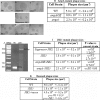
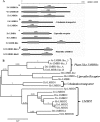



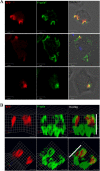


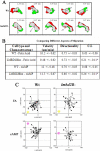

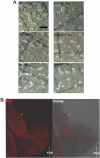
Similar articles
-
A SAP domain-containing protein shuttles between the nucleus and cell membranes and plays a role in adhesion and migration in D. discoideum.Biol Open. 2013 Feb 27;2(4):396-406. doi: 10.1242/bio.20133889. Print 2013 Apr 15. Biol Open. 2013. PMID: 23616924 Free PMC article.
-
Ndm, a coiled-coil domain protein that suppresses macropinocytosis and has effects on cell migration.Mol Biol Cell. 2012 Sep;23(17):3407-19. doi: 10.1091/mbc.E12-05-0392. Epub 2012 Jul 18. Mol Biol Cell. 2012. PMID: 22809629 Free PMC article.
-
The adhesion modulation protein, AmpA localizes to an endocytic compartment and influences substrate adhesion, actin polymerization and endocytosis in vegetative Dictyostelium cells.BMC Cell Biol. 2012 Nov 5;13:29. doi: 10.1186/1471-2121-13-29. BMC Cell Biol. 2012. PMID: 23126556 Free PMC article.
-
Chemotaxis in Dictyostelium: how to walk straight using parallel pathways.Curr Opin Microbiol. 2007 Dec;10(6):578-81. doi: 10.1016/j.mib.2007.10.004. Epub 2007 Nov 26. Curr Opin Microbiol. 2007. PMID: 18032093 Review.
-
Making cups and rings: the 'stalled-wave' model for macropinocytosis.Biochem Soc Trans. 2024 Aug 28;52(4):1785-1794. doi: 10.1042/BST20231426. Biochem Soc Trans. 2024. PMID: 38934501 Free PMC article. Review.
Cited by
-
A SAP domain-containing protein shuttles between the nucleus and cell membranes and plays a role in adhesion and migration in D. discoideum.Biol Open. 2013 Feb 27;2(4):396-406. doi: 10.1242/bio.20133889. Print 2013 Apr 15. Biol Open. 2013. PMID: 23616924 Free PMC article.
-
A dominant missense variant within LMBR1 related to equine polydactyly.Commun Biol. 2024 Oct 31;7(1):1420. doi: 10.1038/s42003-024-07065-w. Commun Biol. 2024. PMID: 39482424 Free PMC article.
-
Ndm, a coiled-coil domain protein that suppresses macropinocytosis and has effects on cell migration.Mol Biol Cell. 2012 Sep;23(17):3407-19. doi: 10.1091/mbc.E12-05-0392. Epub 2012 Jul 18. Mol Biol Cell. 2012. PMID: 22809629 Free PMC article.
-
Mating induces the expression of immune- and pH-regulatory genes in the utero-vaginal junction containing mucosal sperm-storage tubuli of hens.Reproduction. 2015 Dec;150(6):473-83. doi: 10.1530/REP-15-0253. Epub 2015 Sep 14. Reproduction. 2015. PMID: 26370241 Free PMC article.
-
Apical annuli are specialised sites of post-invasion secretion of dense granules in Toxoplasma.Elife. 2024 Jan 25;13:e94201. doi: 10.7554/eLife.94201. Elife. 2024. PMID: 38270431 Free PMC article.
References
-
- Barlow AL, Macleod A, Noppen S, Sanderson J, Guérin CJ. 2010. Colocalization analysis in fluorescence micrographs: verification of a more accurate calculation of Pearson's correlation coefficient. Microsc. Microanal. 16:710–724 - PubMed
-
- Blumberg DD, Ho HN, Petty CL, Varney TR, Gandham S. 2002. AmpA, a modular protein containing disintegrin and ornatin domains, has multiple effects on cell adhesion and cell fate specification. J. Muscle Res. Cell Motil. 23:817–828 - PubMed
-
- Bonner JT. 1967. The cellular slime molds. Princeton University Press, Princeton, NJ
-
- Brazill DT, Meyer LR, Hatton RD, Brock DA, Gomer RH. 2001. ABC transporters required for endocytosis and endosomal pH regulation in Dictyostelium. J. Cell Sci. 114:3923–3932 - PubMed
Publication types
MeSH terms
Substances
LinkOut - more resources
Full Text Sources
Molecular Biology Databases

